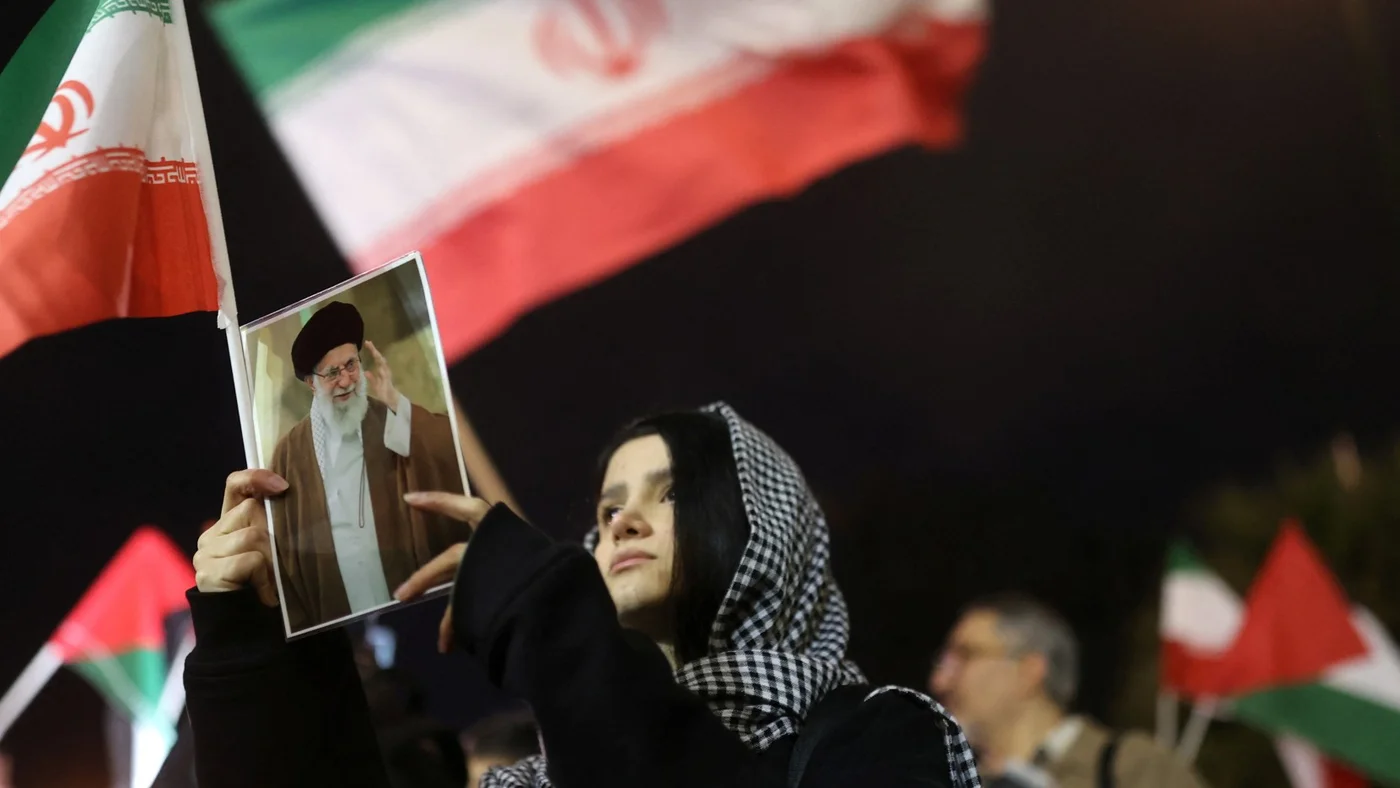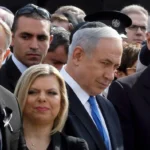
The reposition of sanctions by the current administration, based on wrong assumptions about the vulnerability of Iran, repeats errors of the past and will not undermine the regime.
While Iran celebrates the 46th anniversary of its Islamic Revolution on February 11, tensions with the United States are increasing again.
President Donald Trump rekindled his “maximum pressure” campaign about Iran last Thursday by signing a new presidential memorandum that reinforces sanctions against Tehran, particularly oil exports.
Although he claims to be “divided over” this measure and expressed a preference for reaching an agreement instead of “bombarding Iran to death,” it was his previous government that he retired unilaterally from the nuclear agreement with Iran, undermining them negotiations he now claims to favor.
Meanwhile, the supreme leader Ali Khamenei rejected negotiations as “not rational, intelligent or honorable.”
These exchanges leave little doubt that the impasse is far from over.
This renewed “maximum pressure” policy is based on a growing perception that Iran’s vulnerabilities have never been so large. The fall of the Assad regime in Syria, the beheading of Hezbollah’s leadership and the growing public discontent within Iran have convinced many that the Islamic Republic is on its last legs. For the proponents of a more aggressive policy, it is time to face Iran’s threat on all fronts.
This would involve the formation of an alliance of counterarestiary by deepening the Arab-Israeli partnerships under the agreements of Abraham and the intensification of heavy sanctions to isolate Tehran.
The maximum pressure policy was based on two assumptions flawed: first, that economic sanctions impose little or no cost to the US, and second, that sanctions on themselves inevitably trigger a domestic agitation capable of overthrowing the regime or forcing a reversal of politics.
In addition to these mistakes, the campaign offers no significant incentives-essentially “all dick, no carrots”-leaving Tehran with few reasons to negotiate.
In practice, these assumptions proved to be false.
Cost of sanctions
Unlike Washington’s expectations, the maximum pressure has been costly to the US.
Instead of restricting Iran’s nuclear program, a six -and -a -half increase in sanction designations has transformed Iran into a limit state.
Iran increased its 3.5%uranium enrichment, according to the Global Action Plan (JCPOA), to over 60%, increased its 200 kg enriched uranium inventory to 6,604 kg and doubled its centrifuges installed from 6,000 to 13,000, 45% of them advanced models of IR-6 centrifuges.
Unlike Washington’s expectations, the maximum pressure has been costly to the US.
As a result, Iran’s highly enriched uranium production time for a bomb has fallen from over a year to less than a week.
Also, instead of reducing the risk of military confrontation, he increased by undermining the credibility of US leadership.
From the attack on the waterfront facilities in Saudi Arabia to the overthrow of US drones and missile attacks on US bases such as Ain al-Assad, politics has not been able to prevent further provocations and instead made them more likely.
US pressure also brought Iran to China and Russia closer, reducing Washington’s influence and complicating its strategic priorities.
The increasingly deep ties of Tehran with Beijing and Moscow include transfers of weapons to Russia, prolonging the war in Ukraine. At the same time, China’s willingness to buy Iranian oil weakens sanctions and erodes the credibility of US leadership.
Meanwhile, the Houthis in Yemen, which are closely linked to Tehran, interrupted the Red Sea navigation routes, further expanding global commercial tensions.
Failure assumptions
Another assumption is that the sanctions will trigger enough domestic agitation to overthrow the regime. However, Iran’s experience in three distinct phases of sanctions weakens this logic.
From 1979 to 2009, the US mainly imposed primary sanctions, which did not cause serious damage.
In the second phase (2010-2015), almost 600 cases of significant economic sanctions, but damage limited to well-being, ended up leading to an agreement.
Despite a 17% economic contraction, 65% inflation and a 50% drop in gross oil exports between 2012-2013, Iran’s income transfer program has avoided widespread poverty.
Under JCPOA, most commonly known as nuclear agreement with Iran, sanctions designations decreased from 1,045 in September 2015 to 378 in March 2016.
Ironically, one of the largest waves of protests since 1979 occurred in 2017, during a period of relative economic prosperity (13% growth of GDP, a digit inflation and 1.5 million jobs). In the two main protests that took place since 2018, none of them were motivated mainly by sanctions related economic difficulties.
The third round of sanctions, coinciding with the COVID-19 pandemic, caused significant difficulties. The first two years of maximum pressure contracted the economy by 12%, inflation increased by 75%and poverty increased by 8%.
However, although 1,635 sanctions designations by September 2020, no expected mass revolt or negotiations occurred in direct response. Then President Joe Biden continued to increase the sanctions, raising the total to 2,562 until January 2025.
One of the main reasons why sanctions have failed to stimulate internal revolt is in the Iran’s privilege social welfare system, which isolates politically influential groups of difficulties.
Although sanctions aggravate difficulties, the ruler block, the military, security forces and qualified public sector workers remain relatively protected, while the 60% who work in the informal sector suffer the impact of inflation without a cohesive platform for political action .
The resilience of Iran
A high annual inflation rate of 35 to 40 percent, a public budget deficit of 20 to 25 percent and growing economic stops triggered by energy scarcity suggest that the regime is more vulnerable than ever. The Rial Iranian is in free fall, falling 33 percent over the dollar since President Trump’s election in November.
However, the self -perception of the Iranian authorities and the main economic data does not support this Western perception.
From March 2020 to March 2024, Iran’s economy grew about 17%, with 1.2 million jobs added. In 2023 alone, the Central Bank allocated about $ 68 billion for imports, indicating better access to the hard currency.
Iran also built a global shadow banking network to circumvent formal financial channels. Although costly, this strategy helps mitigate external pressure.
According to World Bank estimates, the poverty rate fell from 30% in 2019 to 22% in 2023 and life standards improved by 18%, returning to levels prior to 2017.
These numbers do not suggest either prosperity or imminent collapse. As after the war with Iraq, the Islamic Republic adapted to sanctions – often at the expense of ordinary citizens – without undermining the central structures of the regime.
At the very least, the maximum pressure policy strengthened the conservative Iranian straw line, undermining moderate reformists. In questioning the benefits of diplomacy, the hard line boosted a “resistance” strategy centered on a “resistance economy”, expanding the skills of missiles and regional dissuasons while deepening the ties with China and Russia.
Recently, a new ultra-radical faction has defended a nuclear deterrent. However, this narrative lost strength, especially after Assad’s overthrow in Syria. In response, moderate voices recovered strength.
A new opportunity
The newly elected president Masoud Pezeshkian won his election with promises of social reforms, economic revitalization and better ties with the West. He now seems better positioned than former President Hassan Rouhani was in 2017, evidenced by the unprecedented parliamentary endorsement of his office.
Pezeshkian appointed Mohammad Javad Zarif as his deputy, despite the legal restrictions, and suspended the controversial Hijab law for the first time.
In recent months, its administration has defended direct dialogue, not only in nuclear issues, but also in other US concerns. He acknowledges that without the relief of sanctions, Iran’s economy has little chance to reach genuine prosperity.
To avoid repeating past mistakes, the US should not overestimate Iran’s fragility and instead adopt a calibrated policy to the country’s internal realities.
He also pressured for renewed compliance with the Financial Action Task Force (FATF) and announced plans to increase freedom on the internet unlocking WhatsApp and Google Play. Although the success of these initiatives remains uncertain, Pezeshkian guaranteed significant support from Khamenei.
Instead of approaching the negotiations, however, the new US policy seems to have returned to a stance that resembles the approach “without negotiation, without war” that defined Trump’s first term.
With a strategy of “all dick, no carrot” not offering genuine incentives, the likelihood of serious diplomatic progress – or any advance – now seems more remote than ever.
Instead of squeezing economic screws to break the regime or incite mass revolt, the US should revise its theory and approach to sanctions. Offering concrete incentives could change internal dynamics and encourage engagement.
However, Iranian authorities recall a similar moment after the Iraq War in 2003, when his proposal of “Great Bargain” was rejected by the Bush administration, who assumed that Iran was vulnerable and was not worth negotiating with him.
A policy adapted to Iran’s domestic realities, with credible and clearly defined incentives for cooperation, would be much more effective. This approach has a much greater chance of guaranteeing US interests or leading to significant agreement than seeking maximum pressure without any clear objectives or strategy.
Such an approach is much more likely to protect US interests or lead to significant agreement than to seek maximum pressure once again without a clear goal or strategy.
Originally published by Middle East Eye on 23/02/2025 – 10h01
Por Hadi Kahahazadeh
Hadi Kahalzadeh is a Fellow Research on the Crown Center for Middle East Studies at Brandis University. He acted as an economist for the Iran’s Social Security Organization from 2002 to 2011. He published extensively on Iran’s political economy, development, welfare state and economic sanctions.
The opinions expressed in this article are the author’s responsibility and do not necessarily reflect the editorial policy of Middle East Eye.
Source: https://www.ocafezinho.com/2025/02/23/por-que-o-retorno-de-trump-a-pressao-maxima-sobre-o-ira-esta-fadado-ao-fracasso-novamente/

